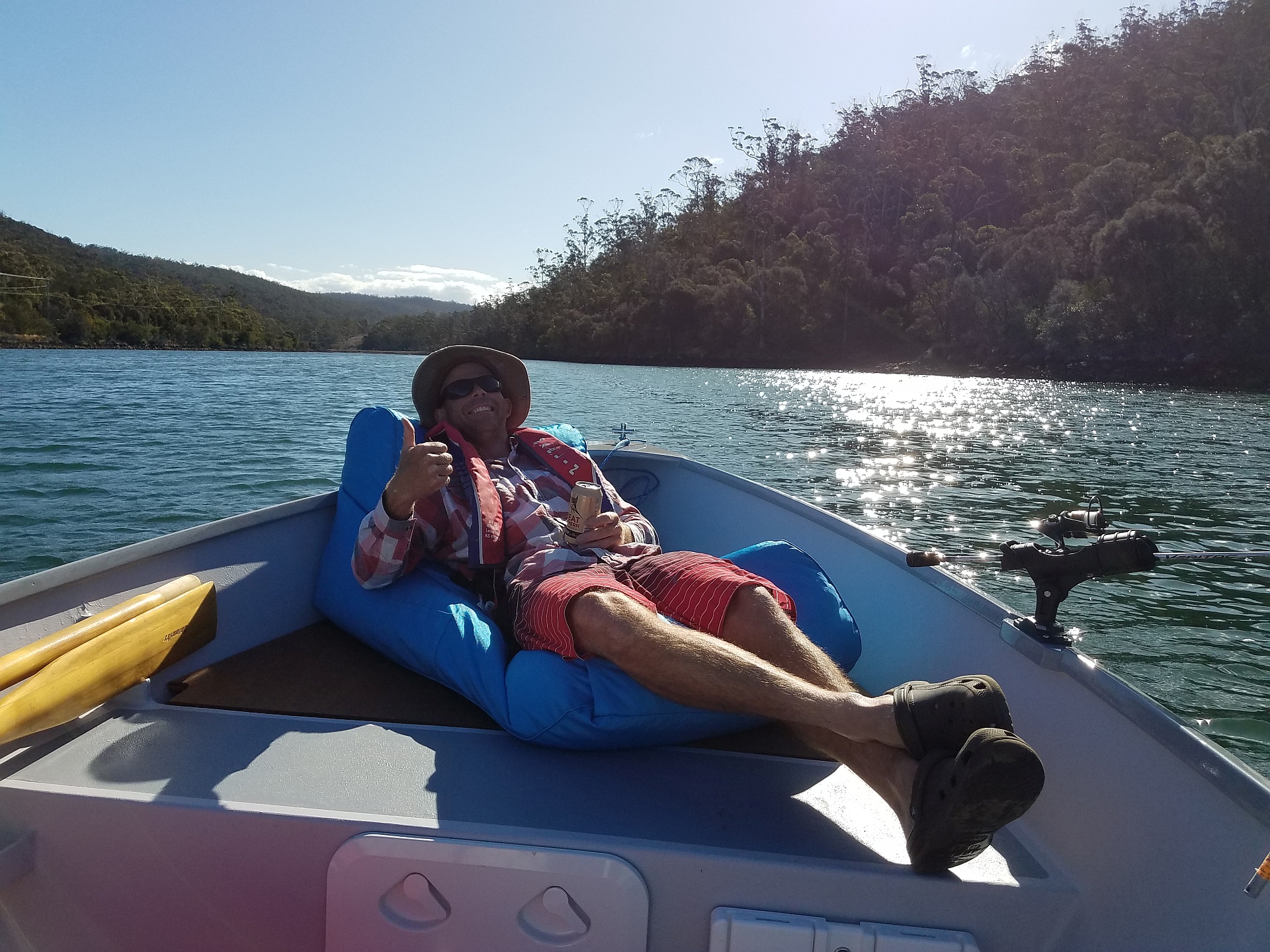Mushulu 14






Mushulu 14
Easy planing at low speeds, great stability whilst at rest, and reduction in fuel consumption without compromising the strength, durability and safety of the design, careful consideration was given to loads of storage lockers, comfortable seating throughout and a stable platform for fishing or other recreational activities without compromising safety for those on board.
Designed also for ease of construction for the first time builder, the Mushulu 14 is light enough to be easily trailerable for adventures in distant places. But overall, it had to be simple and easy to build, without spending everything you have. For the interior, it had to be clean and simple, with a loads of room and storage. Emphasis was given to having higher than normal sides and comfortable seating arrangements, without having your knees in your face. Within the seats there are 2 large sealed lockers, for all those items you may want locked away, while still retaining the foam filled buoyancy compartments in the outer seat sections, as required to comply with the standards. The bow seat also doubles as an anchor locker.
Overall, the design had to be kept simple, clean and functionable, for a great days fishing or simply out and about with the family.
SPECIFICATIONS:
- LOA ……14ft (4.26m)
- BEAM ………6ft - 1in (1.85m) overall
- DRAFT/ hull only ………6″ (152mm) @ DWL
- FUEL CAPACITY ....... Portable Tank
Horsepower… 30 Hp (max)
APPROX DRY TRAILER WEIGHT including a 30 hp motor…..286 lbs
(130 kg ) depending on materials and outboard options*
- Construction …. Plywood Composite Construction
- Safety standards - ABYC standard compliant
- Structure in accordance with ABS class rules
Proudly Australian Designed
From the first sketch on the drafting board to the finished computer 3D modelling and CAD plans, every boat is designed in house by Mark Bowdidge (MRINA) himself.
After nearly forty years of building and designing boats, every design is specifically designed for Purpose, Performance, Seakeeping and Safety
Source: AUD @ Sat, 21 Jun.
MUSHULU 14 FEATURES
Just some of the features the Mushulu 14 includes:
- Sleek yet simple and functional lines
- Shallow yet lightweight hull design for fishing the flats, estuaries and mangroves.
- Tiller steered
- Side pockets for all your gear plus more
- Portable fuel tank
- LEVEL flotation for compliance (we comply to the ABYC standards)
- Engineered to "Class" or Commercial shipping standards for those offroad or offshore fishing adventures.
- Easily handled by 1 person when trailering

Mushulu 14 Frequently Asked Questions
What is included in the Mushulu 14 Plans?
In regards to the Mushulu 12 plans, it includes:
- 11 sheets in total (7 x A1 sheet size and 4 x A0 sheet size - full size bulkhead patterns)
- Full size patterns for bulkheads/ stem frame and transom
- Builders manual
- Bill of materials
- Nearly 100 build photo's for you to preview and assist with your build (A picture tells a thousand words" as the saying goes)
- Tip's and Tricks" e-book for building your boat
- Plus a lot more
Below is an example of the type of plans you receive

Is the Mushulu 14 Builders Plate Compliant? (Australia/ USA/ Canada and the EU)
Yes.
We use the ABYC standard (https://abycinc.org/). (We do not use the AS 1799 standard, as we feel that this standard is full of "holes). Using the ABYC standard, all boats under 20ft MUST meet LEVEL flotation. It also means that the boat must meet certain stability criteria in regards to traverse stability, wind heeling criteria and max Hp allowed.
The Mushulu 14, as designed exceeds the requirements for LEVEL flotation compliance. This covers the boat itself/ outboard/ people and cargo.
This standard is accepted worldwide. (Australia/ USA/ Canada and the EU)
We do not design our boats to meet BASIC flotation. To me, "Basic" flotation is dangerous.
Hope this helps

Can I use a long shaft outboard instead of a short shaft outboard?
No. It creates all sorts of problems down the track, construction wise and performance/ stability wise.
Just build as per the plans
Can I build the boat from foam core?
No.
By doing so, your:
1/ Making the boat too light. This means the boat will float higher in the water, exposing the chines which in turn results in the moment of inertia of the waterplane being reduced which results in an unstable boat.
2/ Also, by building out of foam core, the overall centre of gravity rise's which creates an unstable and rolly boat. Why? Plywood has a density of approx. 600 kgm^3, whereas foam has a density between 60-80 kg/m^3 (pending foam core used). So in effect, you and the outboard have become the dominant weight which is high (Whoops) and now you have a serious problem with stability.
3/ Also the boat will become too "flighty" when on the plane.
BUILD THE BOAT AS PER THE PLANS and you won't have an issue.
Do you provide CNC cut files or kits?
No I do not.
So please don't ask, as refusal may offend

To see more Mushulu 14 Builders Testimonials and their boats, please click HERE



















